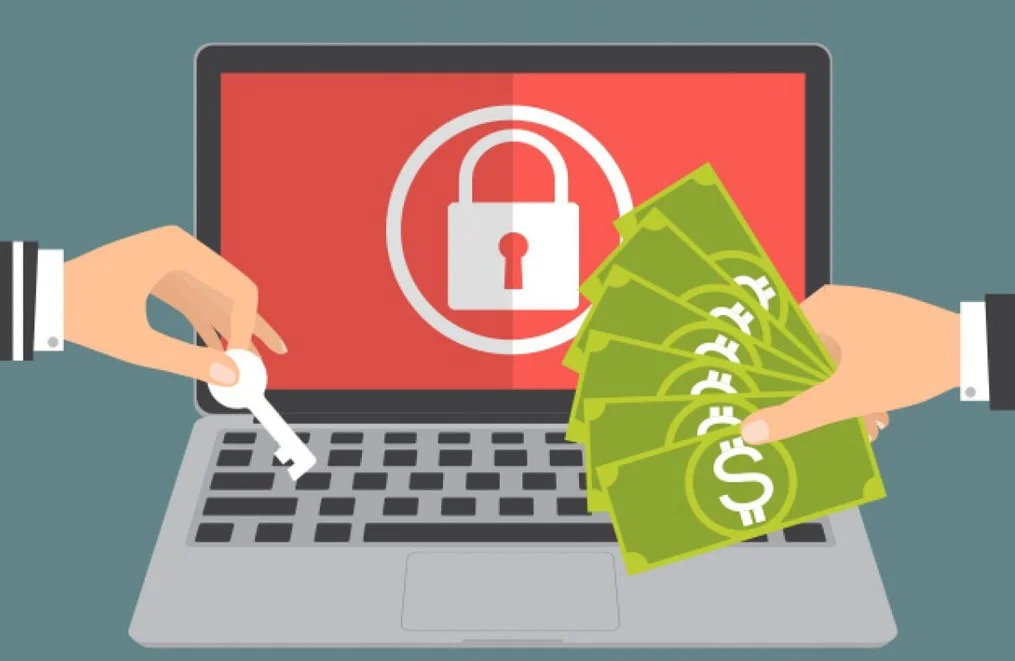Ransomware is malware that encrypts data or files and demands payment to decrypt them. It often exploits human, network, and software vulnerabilities.
To avoid ransomware attacks, patch and update your systems. Also, isolate infected devices by disconnecting them from the network and internet or powering them down, as needed.
Files Are Encrypted
Many ransomware attacks feel like random bouts of bad luck, as if they dropped out of the sky without warning. However, ransomware attackers often give themselves away, particularly to those who know what to look for.
You need to know the signs to apply how to prevent ransomware. One of the first signs of a ransomware infection is an abnormal spike in disk activity. This happens when an attack begins, as the virus parses every folder and file for data to encrypt. Depending on the specific ransomware variant, you may also notice that your system becomes less responsive as an attack is underway.
Hackers typically distribute ransomware as phishing emails or as attachments in malicious documents. The ransomware in the extension then downloads to a victim’s machine and encrypts files. Alternatively, some types of ransomware exploit security holes to gain entry to your network. Performing regular risk assessments and having total endpoint visibility are the best ways to prevent this type of malware.
Once an attack is underway, isolating impacted systems by disconnecting or powering them down is essential. It’s also a good idea to make backups of the affected files. This allows you to recover them without paying the ransom.
You Receive a Ransom Notice
If the ransomware is successful, the attacker will display a notice on the victim’s computer or mobile device explaining that their files are encrypted and can only be accessed by paying a ransom. In most cases, attackers demand payment in Bitcoin, although they may also request other cryptocurrencies or state-sanctioned currencies such as dollars or euros.
Many people rush to pay the ransom, but this is a mistake. Not only is it illegal, but it does not guarantee that your files will be unlocked. Instead, contacting federal and local law enforcement is a good idea. Their forensic technicians can help ensure systems aren’t compromised in other ways and try to find the attackers.
It’s also essential to quarantine impacted systems as soon as possible. This will prevent the malware from spreading to other devices on the network by limiting the attack’s surface. This step typically involves disconnecting a device from its network connection, such as disabling Wi-Fi or shutting down a wired or wireless network switch. It’s also a good idea to create backups of encrypted files if decryption software becomes available or if the ransomware’s encryption is unsuccessful.
You Can’t Access Your Files
Most ransomware attacks include a message demanding payment, or “ransom,” to decrypt the user’s files. These messages display as windows, apps, or a full-screen alert on the computer. Previously, paying the ransom would solve this problem. Still, recently bad actors have taken payments and then kept users’ data for sale on the dark web, which is why it’s crucial to use antimalware software such as Windows Security daily and to create secure backups of all critical files regularly (physically disconnect any external devices after backing up).
More recent ransomware strains like Ryuk, first seen in 2018, encrypt specific file types on an infected device. It spreads from system to system via Emotet and TrickBot, information-stealing Trojans that also deliver ransomware.
A sluggish computer should always be treated as a warning sign because malware and viruses constantly keep track of all processes, which can slow down your CPU and RAM. Additionally, ports being scanned on your network and failed attempts to access backups indicate an impending ransomware attack.
You Can’t Decrypt Your Files
Ransomware is a malware attack that encrypts files on computers, printers, smartphones, wearable devices, point-of-sale terminals, and other endpoints. The attacker demands a ransom to restore access to these devices and data. It infects endpoints using human, system, network, and software vulnerabilities.
Files that have been encrypted by malware may contain scrambled names or contents. If a team member notices that a previously recognizable file name has been replaced with unrecognizable gibberish, this is a warning sign.
A reputable virus scanner or Windows System Restore can help recover files encrypted by ransomware. However, it is essential to remember that a decryption key doesn’t guarantee the return of your data. The criminals behind ransomware are not in the business of fixing computers; they’re in the business of making money.
If you can’t recover your files, report the ransomware to law enforcement immediately. This step is critical because it will enable prosecutors to leverage tools and resources that can help locate the attackers, recover your stolen data, and bring them to justice.
You Can’t Restore Your Files
A ransomware attack feels like a random bout of bad luck, but attacks don’t occur without warning. Threat operators often give themselves away with telltale giveaways that users should heed.
For example, if a backup application that always functions properly begins to produce numerous errors, it shouldn’t be ignored as a malfunction. Likewise, failed attempts to log in to company servers or infrastructure appliances should also be taken seriously.
Another telltale sign is a sudden inability to restore files. For this reason, having a robust backup strategy is vitally important. This is made possible for Windows systems by the Windows File Versions feature that automatically creates previous versions of files as they’re saved and at predetermined intervals. These previous file versions can be used to recover files encrypted by ransomware.
Once a device is infected with ransomware, it’s critical to immediately isolate the affected machine from the network and external storage devices. This will limit the ransomware’s spread and reduce downtime in your organization. This step will also allow you to recover files from a system backup if one is available and confirm that all malware has been eliminated.
